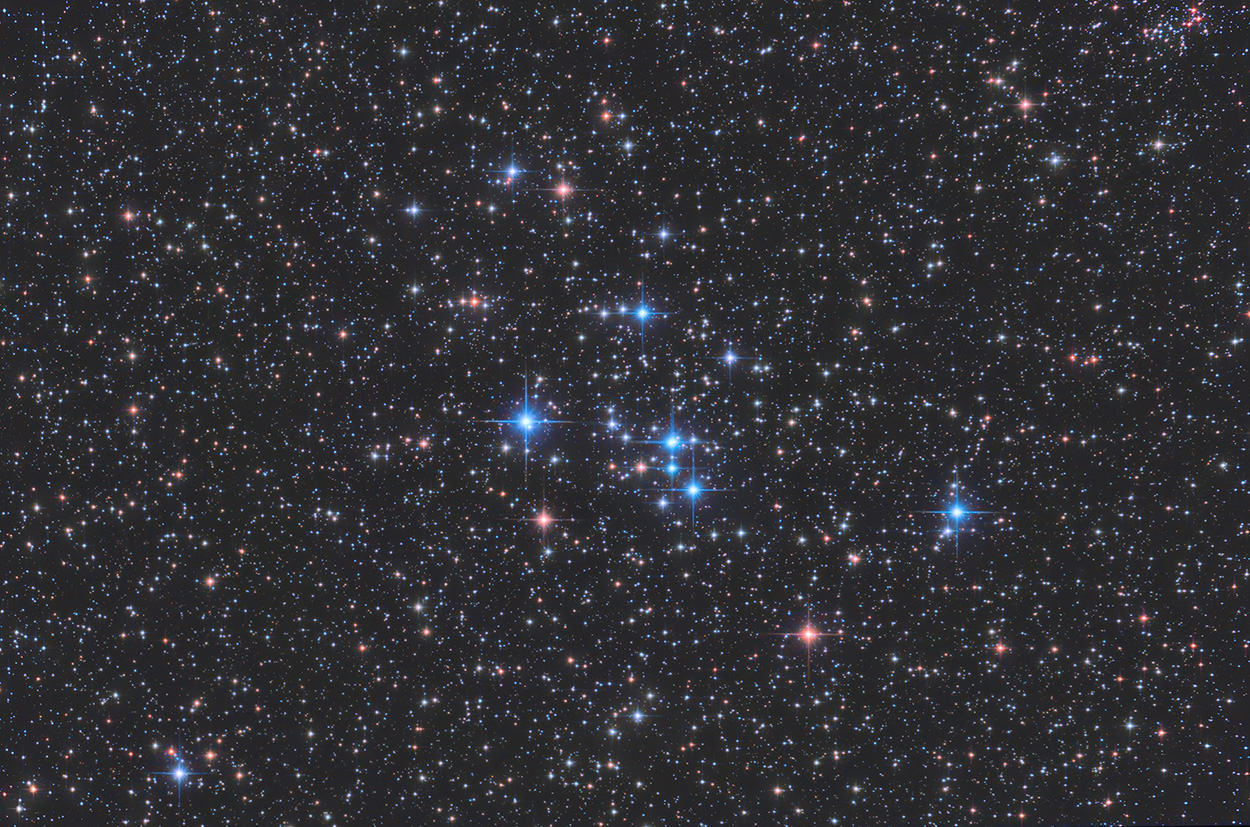
| HOME |
MESSIER 47
OPEN CLUSTER IN PUPPIS (THE POOP DECK)
(Image centered at: ra 07 h:36 m / dec - 14º 30')
CLICK THE IMAGE FOR A HIGH RESOLUTION VIEW
December - 2023, Home Backyard in Martinez, Buenos Aires, Argentina
DATA
TYPE: Ope Cluster
APPARENT DIAMETER: 37 arc minutes
APPARENT MAGNITUDE (V): 4.4
DISTANCE: 1600 light years
IMAGE INFORMATION
INSTRUMENT: 6" ORION OPTICS UK (Ultra Grade Optics) w/Sky Watcher Coma Corrector (0.9x) working at at f4.5
CAMERA: QHY 183 MONO
MOUNT: VIXEN GDPX, OAG with Starlight Xpress Lodestar
FILTERS: BAADER LRGB Set
SKY CONDITIONS: urban skies - Bortle 8 - Full Moon
EXPOSURES: LRGB (40,40,40,40)
OBJECT DESCRIPTION AND IMAGE SESSION
Messier 47 (aka NGC 2422) is an open cluster in the southern constellation of Puppis. It was discovered by Giovanni Batista Hodierna before 1654 and re-discovered by Charles Messier on 1771. It was also independently discovered by Caroline Herschel.
There is no cluster in the original position indicated by Charles Messier, which he expressed in terms of its right ascension and declination with respect to the star 2 Puppis. However, if the signs (+ and −) he wrote are swapped, the position matches. Until this equivalency was found, M47 was considered a lost Messier Object. This identification as the same thing only came in 1959 with a realization by Canadian astronomer T. F. Morris.
M47 is located about 1,600 light-years away from Earth and is about 78 million years old. The member stars have been measured down to about red dwarfs at apparent magnitude 19. There are around 500 members; the brightest being HD 60855, a magnitude 5.7 Be star. The cluster is dominated by hot class B main sequence and giant stars, but a noticeable color contrast comes from its brightest red giants. It is about a degree from Messier 46, which is much older open cluster and much further away from our perspective.